- Details
- Hits: 3200
Station: Wakefield, MI
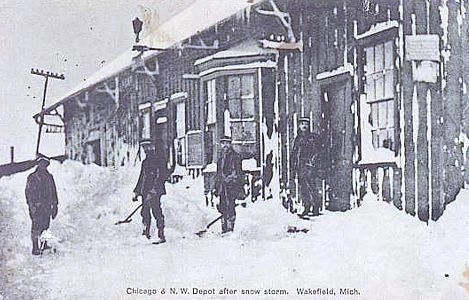
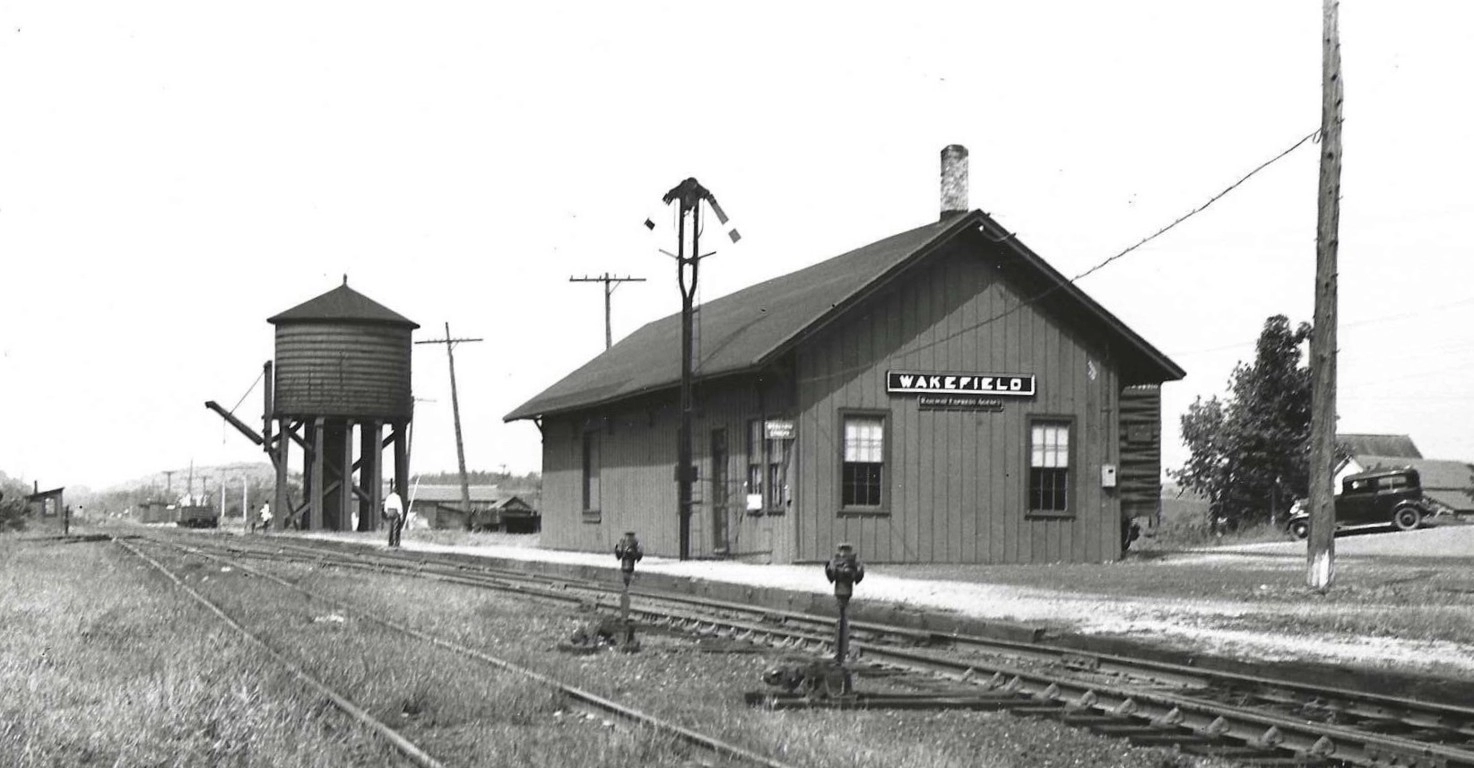
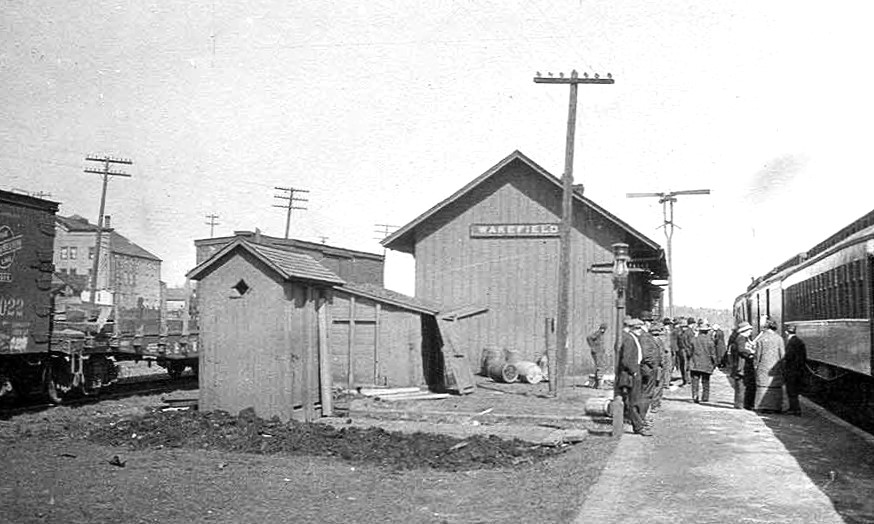
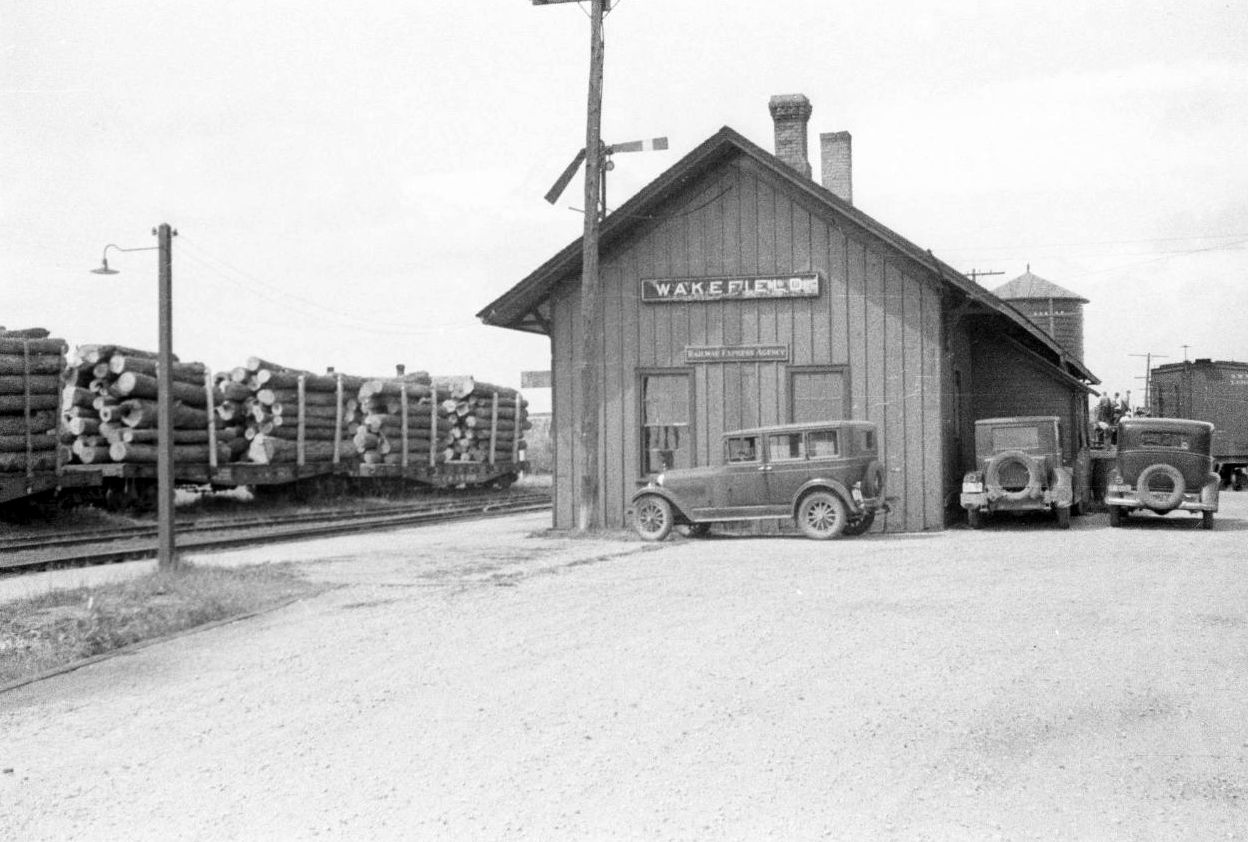 Wakefield is a city on the south side of Sunday Lake, about 20 miles east of Ironwood. The town was settled in 1884, became a village in 1887 and a city in 1919. [MPN]
Wakefield is a city on the south side of Sunday Lake, about 20 miles east of Ironwood. The town was settled in 1884, became a village in 1887 and a city in 1919. [MPN]
The depot at Wakefield was just west of Sunday Lake Road at the west switch of the Wakefield wye track. A water tower was just west of the depot and a two-track "round house", without turntable, was across the main track from the depot. East of the roundhouse was an ice house and "beer depot" in 1917. [SBM-1917]
Photo info: The C&NW depot at Wakefield, digging out from a snowstorm. [Alan Loftis collection]. 2nd photo, the C&NW Wakefield depot and water tower in the 1930's. [C&NW Historical Society]. 3rd image, another view of the depot from the opposite direction from 1914. Note the outhouse next to the building. 4th photo, another view with 1920 vehicles nearby.
Notes
Ramsey - Wakefield Map
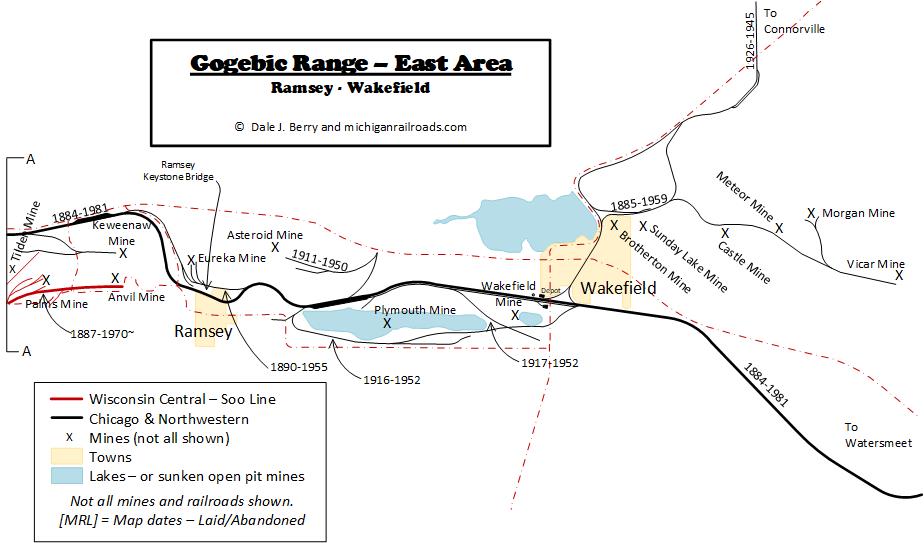
Region Time Line
See Ironwood timeline.
Wakefield Time Line
1887. Fire. Wakefield's greatest and most destructive fire occurred Christmas Eve, 1887. Mike O'Brien, manager of the theater had a pet monkey. This monkey upset a kerosene lamp in one of the rooms of the theater building and before many minutes were gone, the flames had licked well into the tinder-like material of all the buildings on Front street. Eighteen buildings were raised, including several on the west side of Sunday Lake street and the east side of Ascherman street. The Perry house on the northwest corner of Front and Ascherman streets was saved by the application of wet blankets. Snowballs were effective in checking the blaze on Sunday Lake street.
News of the fire was telephoned to Bessemer, but Bessemer's fire fighting equipment could not get through the snow covered forest trail and had to turn back. The damage was estimated at $80,000; only $9,000 insurance was in force to apply to the loss. No one was injured. Some, in fact, benefited; especially some of the miners who helped themselves to whatever articles they wanted which had escaped the flames. [IDG-1932-0714]
1918. The C&NW had a station agent here on the day shift here. It also had a telegraph operators here around the clock. [TRT]
1921. February. Residents and the postal service are concerned over the discontinuance of the "scoots" on the C&NW. The "Scoot" was apparently a quick intercity passenger train(s) which ran back and forth in the morning from Wakefield east to Ironwood and likely Hurley. Elimination of this service by the railroad limits U.S. mail distribution. Another way to move mail to Ironwood and Bessemer was determined but the article notes that Ramsay and Wakefield will still be without mail on Sundays. [BHN-1921-0112]
1923. The condition at the Northwestern station has been a sore spot for many years. Repeated efforts to have the railroad company vacate the outside privies have been made, and as many promises fore action had been obtained from officials. The city now asks the health officer to have the privies removed. The city is also considering an ordinance to have a flagman posted at the various crossings in the city as required by law. [WAK-1923-0105]
1923. By the order of the Wakefield department of health two outhouses at the C&NW depot have been boarded up, having been declared a public nuisance to health. Ordinance required that all outdoor privy's within 100 feet of a street or alley which has a public sewer should be connected with the sewer. [IDG-1923-0201]
1926. October. The Connor Lumber Co. is employing between 200 and 250 in its woods operations north of Wakefield. The men are employed in all kinds of logging operations. Much timber is being cut, decked and loaded for shipment to the company's mills in Wisconsin or to the Ford mills at Iron Mountain. A new Erie steam shovel is on the job preparing a road bed for several miles of new logging road to be laid this fall. It has approximately 20 miles of logging at the present time on the logging company railroad, in addition to several miles of track constructed by the C&NW from this city to Connorsville, the junction and shipping point of the timber and logs. [WAK-1926-1002]
1930. Thomas James, who for more than 12 years watched for the safety of children and pedestrians at the busy Northwestern railroad crossing on Sunday Lake street, died at the family home after only a few days of illness. [WAK-1930-0726]
1964. Gordon Watters, 26 of Ironwood is receiving treatment at Divine Infant Hospital in Wakefield for serious injuries he received in an auto accident near the Soo Line tracks. [IDG-1964-0428] The hospital, which had been operated by the Sisters of St. Joseph for many years, was upgraded in 1946 from 12 beds to 60 beds. It was the only hospital in the community. In the early 1970's,a private company transitioned the hospital to an assisted living facility. It is now operated by Catholic Social Services.
1970. October. The Connor Lumber & Land Company is considering removing their operations out of Wakefield Township. A meeting is requested by the township with the company and the Soo Line railroad (DSS&A) to discuss their plans. [WAK-1970-1008]
Industry
- Brotherton Mine
- Mikado Mine (Verona Mining Company) - 2 miles west of downtown
- Plymouth Mine (Coates & Tweed)
- Wakefield Iron Company
- Wakefield Lumber Company (1917)
Bibliography
The following sources are utilized in this website. [SOURCE-YEAR-MMDD-PG]:
- [AAB| = All Aboard!, by Willis Dunbar, Eerdmans Publishing, Grand Rapids ©1969.
- [AAN] = Alpena Argus newspaper.
- [AARQJ] = American Association of Railroads Quiz Jr. pamphlet. © 1956
- [AATHA] = Ann Arbor Railroad Technical and Historical Association newsletter "The Double A"
- [AB] = Information provided at Michigan History Conference from Andrew Bailey, Port Huron, MI

